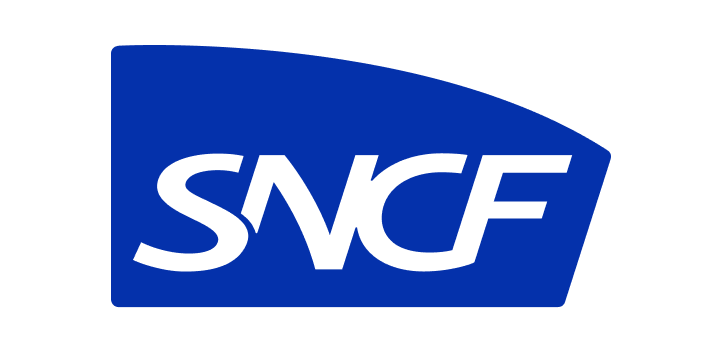In logistics as elsewhere, the fragmentation of the market and the internationalisation of trade make it difficult to monitor the flow of goods. And the usual administrative procedures, carried out on carbon paper, do not help.
However, in the era of coronavirus and social distancing, professionals are seeking to strengthen the traceability of essential goods. Hopefully limiting the areas of contamination through the digitization of documents via the blockchain could provide a reliable solution. Able to guarantee the integrity and consistency of information for carriers, Blockchain offers, in addition to more durable measures, real-time visibility thanks to the transfer of responsibility.
Manual, archaic and non-environmental validation processes
Despite the fact that, according to Alexandre Berger, Head of the Logistics BU within the La Poste Group, it is "one of the most collaborative sector" but logistics is still a world of zero trust. This translates into a distrust of the various links and a strong reservation about sharing data in the face of the risk of serving a competitor's strategy. As a result, administrative procedures are cumbersome, time-consuming and manual.
In the logistics sector, the validation circuit (quality, consignment note) is carried out on paper sheets, with the very real risk of losing the document or entering erroneous information in haste or due to inattention.
In fact, despite a very "accounting" control (invoice reconciliation, etc.) with stamping, signature and transcription of transactions carried out at each stage of the value chain between the various logistics players (production plants, shippers, service providers, carriers, logistics platforms, distributors, retailers, etc.), it is almost impossible to benefit from reliable data and therefore to have real-time visibility on the flow of goods.
Blockchain, a "contactless" solution in the age of coronavirus
According to Clément Bergé Lefranc, CEO of Ownest, Blockchain is a mechanism of consensus that allows the collateral effects of the individual objectives of each player in the supply chain to be arranged in a mechanism that is self-controlled and self-securing in a virtuous circle.
To paraphrase Alexandre Berger during a previous Bpi France Totem Supply Chain event, Blockchain makes it possible to "work without trusting each other".
As a technology that generates certified, immutable and transferable information, its digital dimension makes it possible to adopt compatible health and safety practices in an era of social distancing.
Thanks to the transfer of responsibility based on the tokenization of assets such as goods, a unique digital tracker is created on Blockchain for each product tracked. This enables real-time visualization of all movements in the supply chain while limiting physical contact with products to the bare minimum.
Being able to scan the goods at a good distance, carriers and consignees are able to check load matching (quantity and therefore real presence or not of the product, type of goods...). Both are then free to accept or refuse the transfer of responsibility.
In response to coronavirus, the Ownest startup has set up a new two-phone system.
It is enough for the emitting logistics operator to scan the QR code (generated for the transaction) of the recipient. On his side, the recipient can then connect his phone and present his QR code. A gesture that implies responsibility insofar as any validation of the load is tantamount to acceptance of responsibility for these same products.
E-CMR, the right barrier gesture to save logistics transactions
As a reminder, the CMR (for Cargo Movement Requirement), also known as a consignment note, is a contract for the carriage of goods involving a tripartite relationship. It provides a summary of the legal information of the consignee, the transport company but also on the carrier himself (name/first name, registration plate, weight of the goods and comments).
In principle, the document is filled in after the goods have been loaded, i.e. after the packages have been handled. It takes the form of carbon paper produced in triplicate, handed over from hand to hand and often signed twice at the shipping dock.
The problem is that such information, which is paramount from a legal point of view in the event of a dispute, is not certified as accurate and may be lost. There are two circumstances that may render it unusable.
In addition, the transfer of documents from one player to another increases the risk of inter-professional contamination and with it the related systemic risks (professionals made unavailable, disruption of the supply chain, immobilisation of goods or emergency storage outside conventional channels). A study by the scientific journal The Lancet in April 2020 highlighted the duration of infectivity of the coronavirus on physical surfaces. Although these data should be taken with caution, the researchers had concluded that the duration was 2 days on paper.
In the age of coronavirus, a digital version of this legal document is necessary to ensure the continuity of the logistic activity and to prepare the economic revival but also to protect the professionals against any risk of contamination.
The content of this E-CMR does not differ from the paper version: identity of the various participants, list of goods, total mass, comments and signature. Moreover, it completes and simplifies it.
By consolidating the information that will be entered in it, an E-CMR blockchain makes it possible to generate data with high added value insofar as it is possible to check its consistency and guarantee its integrity. In addition, the electronic signature, made possible by the digitization of the consignment note, makes it possible to comply with the rules of social distancing.
As you will have understood, blockchain electronic signature makes logistics professionals more responsible by enabling them to extract themselves from a purely declarative system and thus solve the reliability problems linked to a manual validation circuit.
Picture credit : 8photo/Freepik
![Cdiscount 2022 04 01 174830 mhxm]()
![Scnfbis]()
![Saint Laurent]() Company
Company



